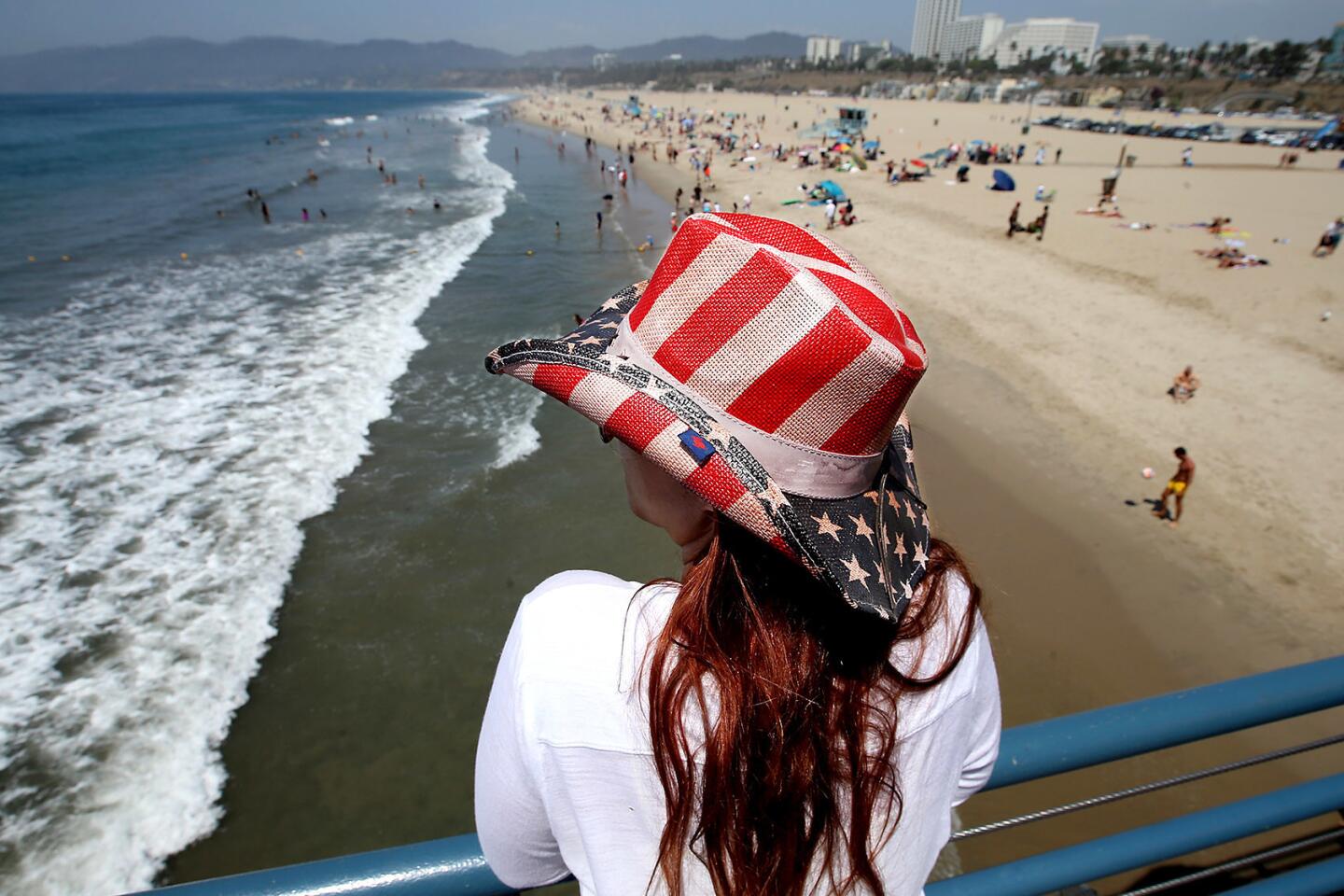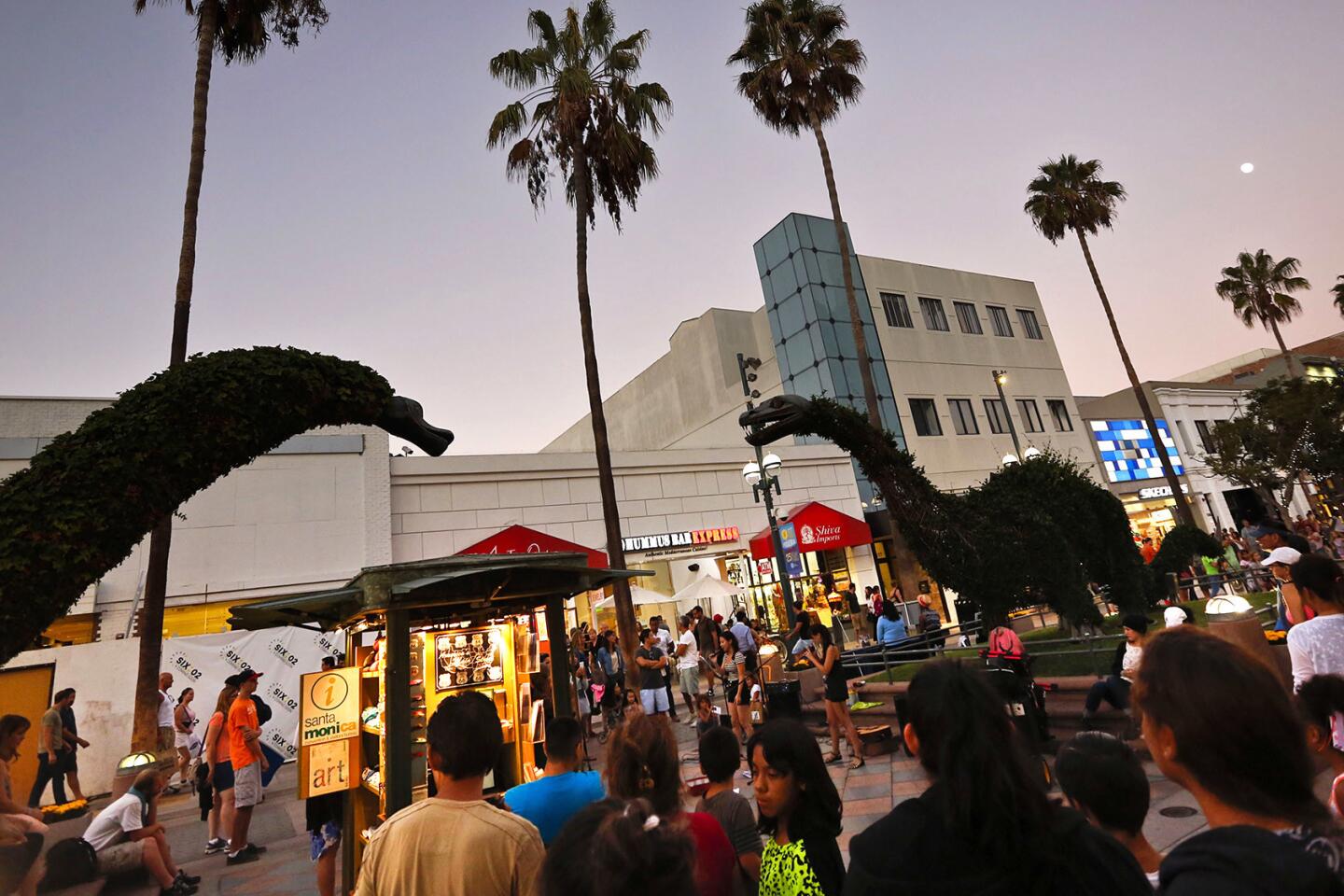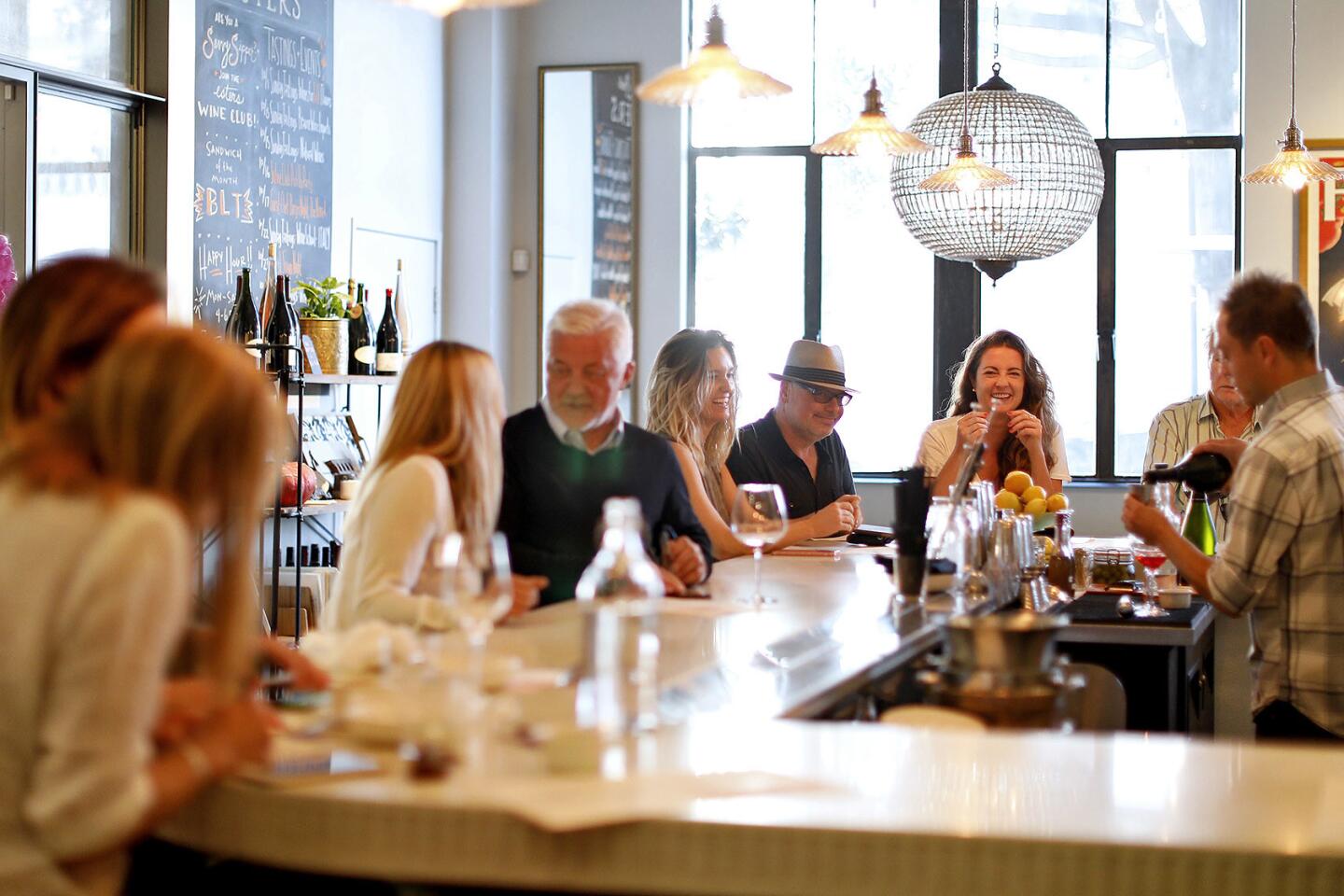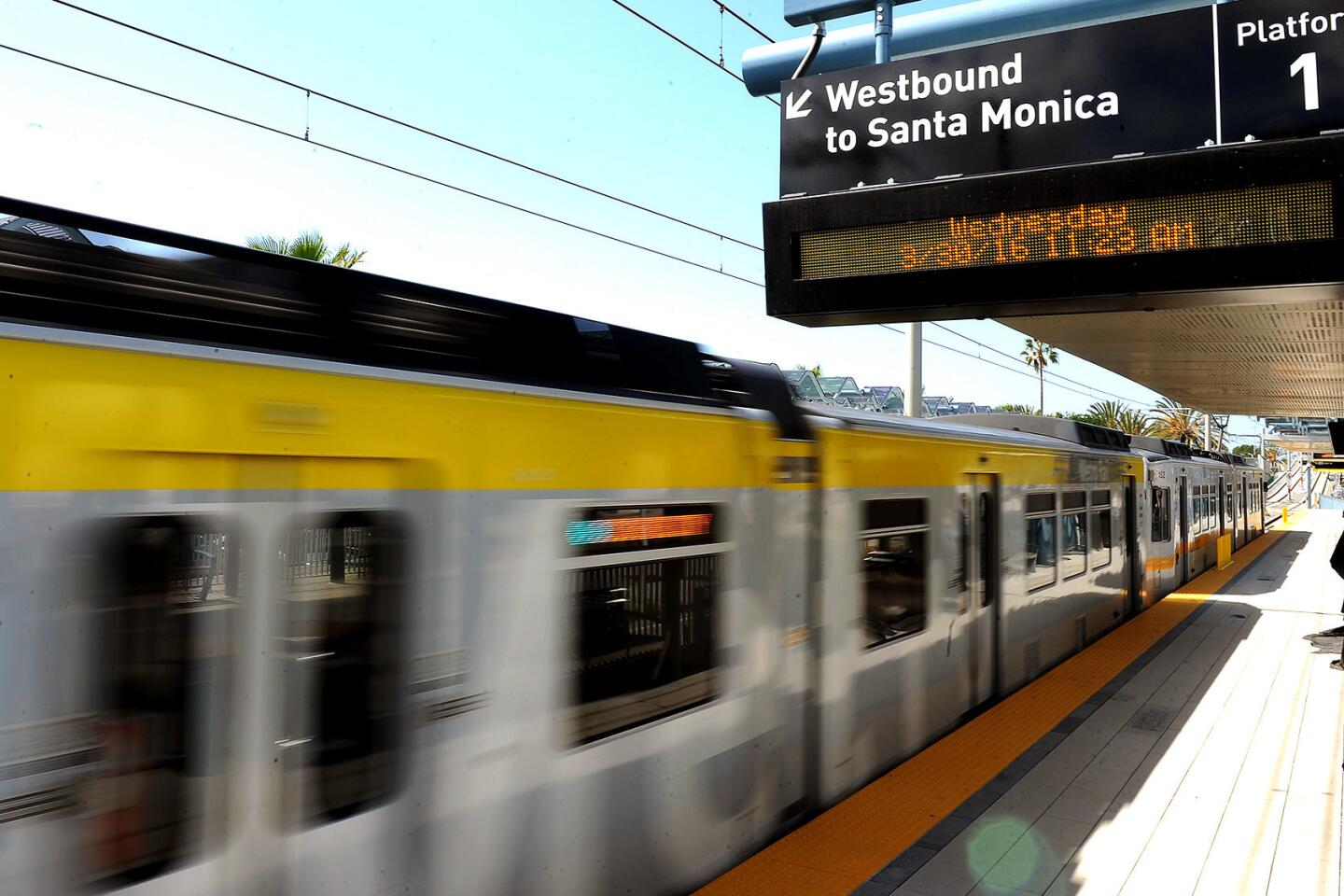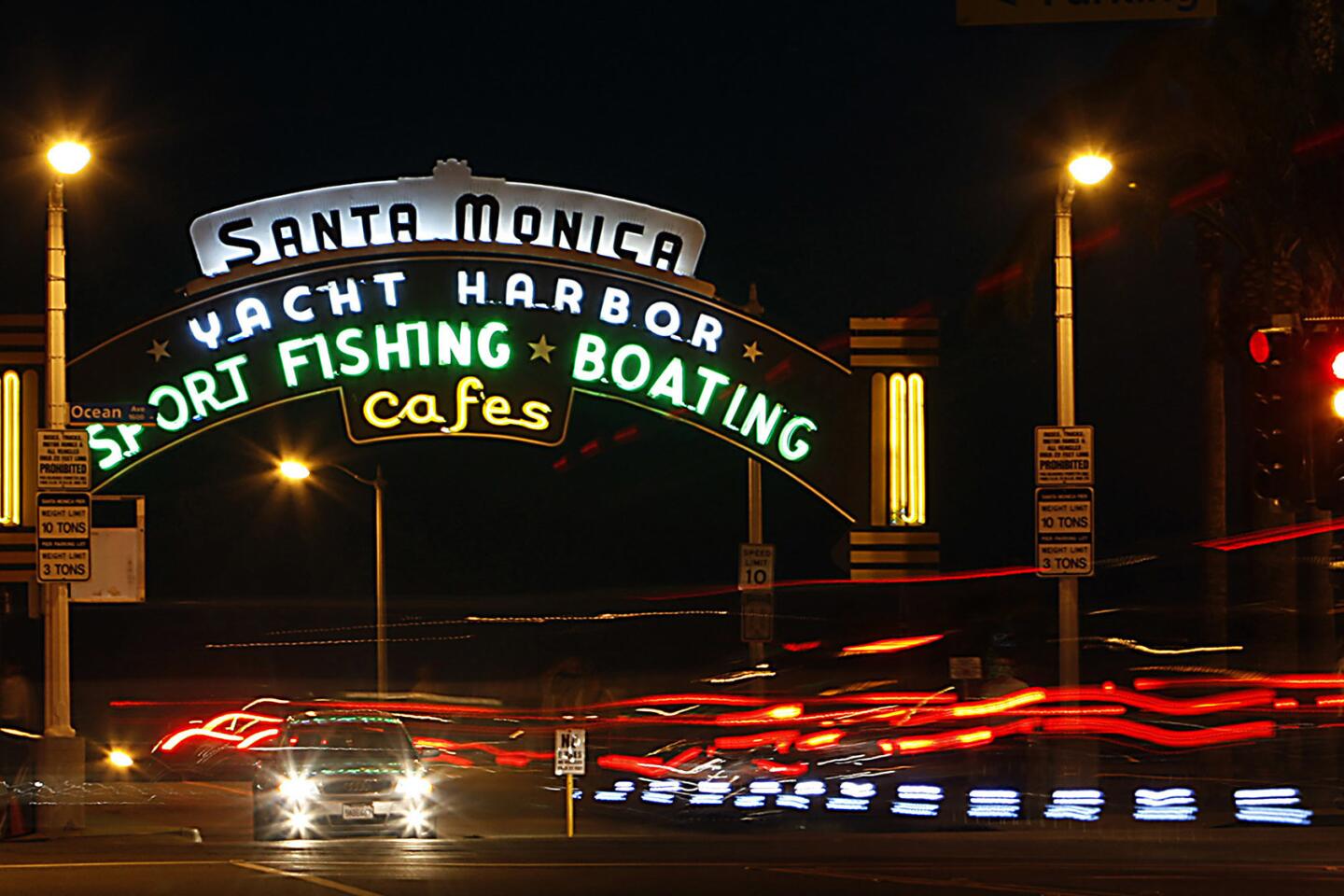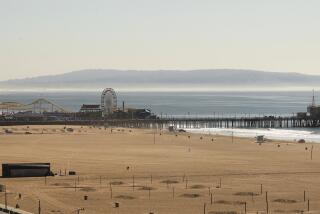Neighborhood Spotlight: Santa Monica’s a great place to visit, but can you afford to live there?
- Share via
To stand along the fence of Palisades Park and look out over the ocean, it’s hard to imagine anyone taking in the same vista and imagining a destiny for Santa Monica other than that of a scenic seaside resort town.
Col. Robert S. Baker and Sen. John P. Jones, both of whom made substantial fortunes from silver mining, certainly recognized the natural beauty of the area when they purchased the Rancho San Vicente y Santa Monica with an eye toward turning its grazing range into Southern California’s next boom town.
They founded the city of Santa Monica in July of 1875 and, five days later, began selling plots at auction, enticing would-be buyers with a speech that reached dizzying new heights of real estate hyperbole:
“We will sell at public outcry to the highest bidder the Pacific Ocean, draped with a western sky of scarlet and gold; we will sell a bay filled with white winged ships; we will sell a southern horizon, rimmed with a choice collection of purple mountains carved in castles and turrets and domes; we will sell a frostless, bracing, warm yet unlangoured air braided in and out with sunshine and odored with the breath of flowers.”
Sell the bay they did, and a town sprang up literally overnight. The seeds of their fledgling metropolis successfully planted, Baker and Johnson set about making the next phase of their grand plan a reality. They would build a wharf, and a railroad leading to that wharf, and so win the race to become the port of entry for all goods bound for Southern California by sea, and the berth from which the riches of the Golden State could be exported to the world.
Unfortunately for them, and quite fortunately for appreciators of Santa Monica’s public beaches, San Pedro’s rival plans to become a deepwater port gained the blessing of the federal government and the wharves, warehouses and vast rail yards necessary to support a world-class harbor in Santa Monica Bay never materialized.
Instead hotels, pleasure piers and wide sandy beaches became the economic engines that drove the city. Santa Monica became not a exporter of goods, but of picture-postcard sunsets, of Muscle Beach, of skateboarders and of dolphins frolicking in the surf. Its chief product was, and is, itself.
Neighborhood highlights
Silicon Beach: Although many of the start-ups that called Santa Monica home have decamped for Playa Vista and Culver City, there is still a healthy tech ecosystem centered around the Expo Line corridor.
California dreamin’: When it comes to the SoCal beach mythos, it doesn’t get more iconic than Santa Monica beach and the pier, which millions visit each year.
YIMBY: Santa Monica voters recently rejected draconian restrictions on development in the city, opting for a smart-growth plan that accommodates new housing and hotels without destroying the unique character of the place.
Neighborhood challenge
Retail apocalypse: Tourists and new residents continue to flood Santa Monica, but at the same time retail is moving out, with more vacant storefronts on the Third Street Promenade than street musicians.
Affordable-housing woes: Living by the beach has its costs, and for many, they’re simply too darn high.
Expert insight
Dan Lackey of Compass has been selling homes in Santa Monica for more than a decade and noted that new builds are taking on a fresh look.
“For quite a while, I saw different variations of modern and architectural homes trending on the new construction front,” Lackey said. “I’m now seeing the trend go toward more traditional styles: Cape Cod, modernized farmhouses, etc.”
Santa Monica’s trademark, however, still lies in its customized owner-user homes, and neighborhoods in the southern part of the city, such as Ocean Park and Sunset Park, offer plenty of examples.
“I think Santa Monica will continue to evolve and be at the forefront of eco-building and social progression,” Lackey said. “As far as real estate goes, it will mirror prime parts of San Francisco; there will always be a high demand and a limited supply.”
Market snapshot
Santa Monica spans five ZIP Codes. Based on 27 sales, the median sales price for single-family homes in December was $3.2 million, according to CoreLogic.
The majority of the city’s December home sales took place in the 90402 ZIP Code, where, based on 14 sales, the median sales price for single-family homes was $4.058 million, up 10% year over year, according to CoreLogic.
Report card
Of the 12 public schools in the Santa Monica boundaries, three scored above 900 on the 2013 Academic Performance Index: Roosevelt Elementary at 951, Franklin Elementary at 949 and Lincoln Middle at 907.
Other standouts include Edison Elementary, which scored 884, and McKinley Elementary, which scored 883. Santa Monica High scored 823.
Times staff writer Jack Flemming contributed to this report.
MORE FROM HOT PROPERTY
LA Opera president is ready to pass the baton for Arts District loft
Former Steelers all-pro James Farrior finds a new home field in Tarzana
‘Fast and Furious’ director Rob Cohen looks for a quick sale in Hidden Hills
More to Read
Sign up for Essential California
The most important California stories and recommendations in your inbox every morning.
You may occasionally receive promotional content from the Los Angeles Times.
